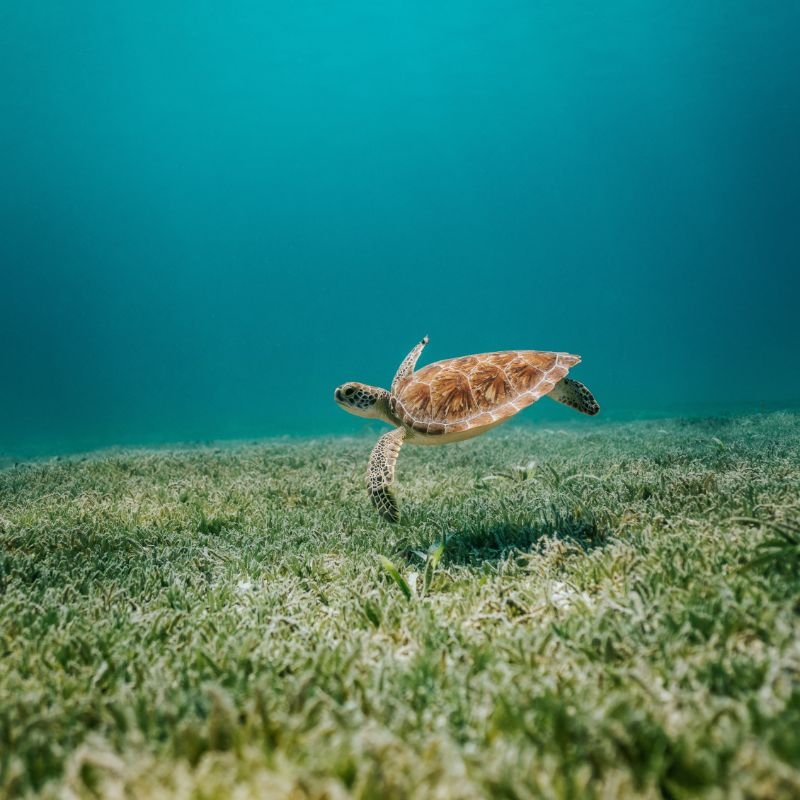Are Turtles Amphibians? Facts You Should Know
Discover why turtles aren't amphibians but reptiles. Learn the key differences, scientific facts, and common misconceptions explained simply.
Oh boy, here we go again! If I had a nickel for every time someone called a turtle an amphibian, I'd probably have enough money to buy my own turtle sanctuary. It's one of those misconceptions that just won't die, like thinking tomatoes are vegetables or that you can see the Great Wall of China from space. But hey, I get it! When you see a turtle swimming around in a pond, hanging out near frogs and salamanders, it's easy to lump them all together in your mind.
The confusion about whether turtles are amphibians isn't just a simple mix-up; it's rooted in some pretty understandable observations. After all, many turtles spend a good chunk of their lives in water, just like frogs and salamanders do. They're cold-blooded, they lay eggs, and they've been around since the dinosaurs. So what gives? Why aren't these shelled swimmers considered amphibians?
Well, buckle up, because we're about to dive deep into the fascinating world of animal classification. Understanding "Are Turtles Amphibians? Facts You Should Know" isn't just about winning trivia nights (though that's a nice bonus). It's about appreciating the incredible diversity of life on our planet and understanding how scientists organize the natural world. Trust me, by the end of this article, you'll never mix up turtles and amphibians again!
The Big Reveal: What Turtles Really Are
Spoiler Alert: They're Reptiles!
Let's rip off the band-aid right away: turtles are reptiles, not amphibians. There, I said it! They belong to the class Reptilia, rubbing shoulders with snakes, lizards, crocodiles, and their extinct buddies, the dinosaurs. This isn't just some arbitrary decision made by bored scientists; it's based on fundamental biological characteristics that set reptiles apart from amphibians.
The scientific classification goes like this:
Kingdom: Animalia (they're animals, duh!)
Phylum: Chordata (they've got backbones)
Class: Reptilia (here's where the magic happens)
Order: Testudines (the turtle gang)
Why the Confusion Exists
Looking at why people think turtles might be amphibians, it's actually pretty logical:
Water association: Many turtles live in or near water
Cold-blooded nature: Both groups are ectothermic
Egg-laying: Both lay eggs (though very differently!)
Ancient lineage: Both groups are seriously old school
Habitat overlap: You'll find them in similar environments
But here's the thing: sharing a neighborhood doesn't make you the same species. It's like saying dolphins are fish because they swim in the ocean. Close, but no cigar!
Reptiles vs. Amphibians: The Ultimate Showdown
Key Differences That Matter
When we're talking about "Are Turtles Amphibians? Facts You Should Know," we need to understand what separates these two groups. It's not just scientific nitpicking; these differences are huge!
Skin Deep Differences:
Reptiles: Dry, scaly skin covered in keratin (the same stuff in your fingernails)
Amphibians: Moist, permeable skin that can absorb water and oxygen
Breathing Arrangements:
Reptiles: Lungs only, from birth to death
Amphibians: Start with gills, develop lungs later (talk about a glow-up!)
Baby Business:
Reptiles: Lay eggs with hard or leathery shells on land
Amphibians: Lay soft, jelly-like eggs in water
Life Cycles:
Reptiles: Born as mini versions of adults
Amphibians: Undergo metamorphosis (tadpole to frog transformation)
The Evolutionary Split
Here's where it gets really interesting! Reptiles and amphibians parted ways about 312 million years ago. That's older than the dinosaurs, folks! Amphibians were actually the first vertebrates to crawl onto land, but they never fully committed to the terrestrial lifestyle. They're like that friend who moved to the suburbs but still keeps their city apartment.
Reptiles, on the other hand, went all-in on land living. They developed:
Amniotic eggs (self-contained baby pods)
Waterproof skin
More efficient lungs
Better kidney function for water retention
Turtle Biology 101: What Makes a Turtle a Turtle
The Shell Game
Let's talk about the elephant in the room, or should I say, the shell on the turtle? That iconic shell isn't just for show; it's a masterpiece of evolution that screams "REPTILE!" at the top of its lungs.
Shell structure includes:
Carapace: The top dome (basically a modified ribcage)
Plastron: The flat bottom part
Bridge: Connects the top and bottom
Scutes: Keratin plates covering the bone (reptile trademark!)
No amphibian has anything remotely close to this setup. Frogs and salamanders are out here naked and vulnerable while turtles are walking around in their own personal tanks!
Turtle Skin: The Reptilian Giveaway
Ever touched a turtle? Their skin is dry and scaly, especially on their legs and neck. This isn't just a fashion choice; it's a water-saving adaptation that's quintessentially reptilian. Amphibians would literally die with skin like this because they need that moisture for breathing and staying hydrated.
Breathing Like a Boss
Turtles breathe air through lungs from day one. Baby turtles don't have a weird aquatic phase where they're swimming around with gills. They hatch ready to breathe air, even if they immediately head for water. Some aquatic turtles have developed cool tricks like cloacal respiration (yeah, butt breathing is a thing), but that's just a bonus feature, not their primary respiratory method.
Are Turtles Amphibians? Facts You Should Know About Their Lifecycles
No Metamorphosis, No Problem
One of the biggest differences between turtles and amphibians is the whole metamorphosis situation. Amphibians are the ultimate transformers of the animal kingdom. They start life as aquatic larvae with gills and tails, then completely reorganize their bodies to become land-capable adults.
Turtles? They're more like "what you see is what you get." A baby turtle looks like a tiny adult turtle. Sure, their proportions might change a bit as they grow, but they're not sprouting new limbs or losing tails. They hatch with:
Four legs (flippers for sea turtles)
A shell
Lungs for breathing
The ability to live in their chosen habitat
Egg-cellent Differences
The way turtles and amphibians handle reproduction is like comparing apples and oranges, if apples had hard shells and oranges were made of jelly.
Turtle eggs:
Hard or leathery shells
Laid on land (even sea turtles!)
Self-contained with yolk and albumen
Don't need water to develop
Amphibian eggs:
Soft, gel-like coating
Must be laid in water or very moist areas
Permeable to water
Dry out quickly if exposed to air
Habitat Preferences: Land, Sea, and Everything in Between
Aquatic Turtles: The Source of Confusion
This is probably where most of the "are turtles amphibians" confusion comes from. Seeing a red-eared slider basking on a log next to some frogs makes people think they're all in the same club. But here's the deal: living in water doesn't make you an amphibian any more than living in a tree makes you a bird.
Aquatic turtle adaptations:
Webbed feet or flippers for swimming
Streamlined shells
Ability to hold breath for extended periods
Specialized salt glands (in sea turtles)
But even the most aquatic turtles still need to:
Surface to breathe air
Lay eggs on land
Bask in the sun for thermoregulation
Terrestrial Turtles: Land Lovers
Box turtles and tortoises are living proof that turtles are reptiles. These guys might take a dip now and then, but they're primarily land animals. Try keeping a frog or salamander away from water for that long and see what happens (spoiler: it won't end well).
Land turtle features:
High-domed shells
Elephant-like feet
Ability to survive in dry environments
Specialized kidneys for water conservation
Common Turtle Myths Debunked
Myth 1: All Turtles Live in Water
Nope! Tortoises are exclusively land-dwelling turtles. They'd actually drown if you threw them in deep water because their heavy, domed shells aren't built for swimming. Box turtles are somewhere in the middle, enjoying both land and shallow water.
Myth 2: Turtles Can Breathe Underwater
While some aquatic turtles can absorb oxygen through their skin or cloaca when underwater, they still need to surface for air. They're not fish or amphibian larvae with gills. Even the most aquatic species are still air-breathers at heart.
Myth 3: Baby Turtles Start Life in Water Like Tadpoles
Absolutely not! Baby turtles, whether destined for land or sea, hatch on land and breathe air immediately. Sea turtle hatchlings make that famous dash to the ocean, but they're already equipped with lungs and the ability to surface for air.
The Scientific Evidence: Why Classification Matters
DNA Doesn't Lie
Modern genetic analysis has confirmed what anatomists have known for centuries: turtles are definitely reptiles. Their DNA shows clear relationships with other reptiles, particularly crocodilians and birds (yes, birds are technically reptiles too, but that's another article!).
Fossil Records Tell the Tale
The fossil record shows that turtles evolved from reptilian ancestors, not amphibian ones. The earliest known turtle, Odontochelys, lived about 220 million years ago and already showed distinctly reptilian features, including:
Partial shell development
Reptilian skull structure
Limb bone arrangement
Terrestrial adaptations
Physiological Proof
Beyond the obvious stuff, turtles have numerous internal features that mark them as reptiles:
Reptilian characteristics include:
Single occipital condyle (how the skull connects to the spine)
Specific arrangement of heart chambers
Reptilian kidney structure
Unique respiratory system adaptations
Keratin-based skin proteins
Are Turtles Amphibians? Facts You Should Know for Education
Teaching Moments
When explaining why turtles aren't amphibians to kids (or adults who should know better), try these simple comparisons:
The Jacket Analogy: Amphibians have "wet raincoats" (permeable skin) while turtles wear "leather jackets" (waterproof scales)
The House Comparison: Amphibians are like people who need to live near water to survive, while turtles are like people who enjoy the beach but can live anywhere
The Baby Story: Amphibian babies look nothing like their parents and need swimming lessons, while turtle babies are born ready to adult
Why It Matters
Understanding proper animal classification isn't just academic nitpicking. It helps with:
Conservation efforts
Proper pet care
Ecological understanding
Scientific literacy
Appreciating biodiversity
Turtle Diversity: A Reptilian Rainbow
Types of Turtles That Confuse People
Some turtles seem more "amphibian-like" than others, leading to confusion:
Highly aquatic species:
Softshell turtles
Snapping turtles
Map turtles
Painted turtles
Slider turtles
But remember, lifestyle doesn't determine classification. A penguin isn't a fish just because it swims!
The Extremes of Turtle Adaptation
From the fully terrestrial Galápagos tortoise to the ocean-roaming leatherback sea turtle, the diversity within turtles showcases just how successful the reptilian body plan can be. Each species has adapted to its environment while maintaining those core reptilian characteristics.
Conservation Implications
Different Needs, Different Approaches
Understanding that turtles are reptiles, not amphibians, is crucial for conservation because:
Reptile conservation focuses on:
Nesting site protection
Temperature regulation needs
Long-term habitat stability
Protection from collection
Amphibian conservation emphasizes:
Water quality
Wetland connectivity
Disease prevention
Chemical pollution control
Climate Change Impacts
Reptiles and amphibians face different challenges from climate change:
Turtles: Temperature-dependent sex determination affected
Amphibians: Breeding pools drying up
Both: Habitat loss and range shifts
Conclusion
So there you have it! The question "Are Turtles Amphibians? Facts You Should Know" has a definitive answer: turtles are unequivocally reptiles. From their scaly skin and shelled eggs to their lung-based breathing and lack of metamorphosis, every aspect of turtle biology screams "reptile!" Understanding these distinctions helps us appreciate the incredible diversity of life and the importance of accurate scientific classification. Next time someone calls a turtle an amphibian, you'll be armed with facts to set the record straight!
Read next: Why Is My Cat So Clumsy? Common Causes
Frequently Asked Questions
Q1: Can turtles breathe through their skin like frogs?
A: No, turtles breathe through lungs, though some can absorb minimal oxygen through cloaca.
Q2: Do any turtles undergo metamorphosis?
A: No, all turtles hatch as miniature versions of adults with no metamorphosis.
Q3: Why do sea turtles return to land?
A: Sea turtles must lay eggs on land because they're reptiles, not amphibians.
Q4: Are there any amphibians with shells?
A: No amphibians have shells; this is a uniquely reptilian feature among vertebrates.
Q5: Can turtles survive without water like other reptiles?
A: Yes, many turtle species live primarily on land, especially tortoises and box turtles.

































